Landing Craft Vehicle Personnel (LCVP) "Higgins Boat"
Figure 1 shows the LCVP being loaded onto it's cradle where it will await restoration by museum personnel.
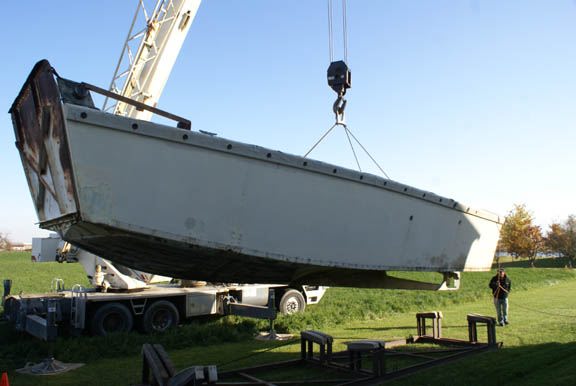
Figure 1
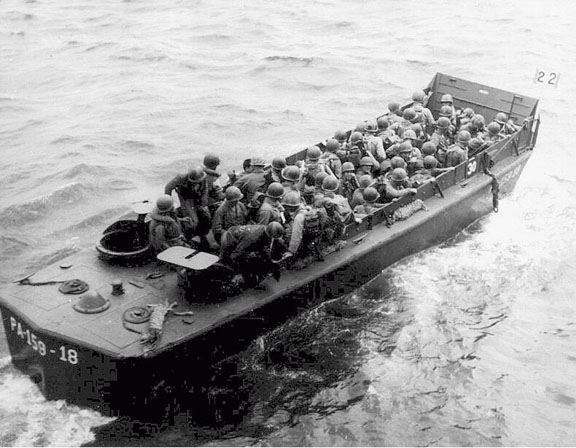
Figure 2
Figure 2 shows a typical department of the Navy photo of a WWII Higgins boat. There were three major patterns of the Higgins boat, the 1942, the 1943 and 1952. The boat identification numbers usually started with the host ship followed by the sequential number of the boat.
For the Higgins boat being restored, the attack transport Aquarius (AKA-16) shown in Figure 3 (U.S. Navy Photo) was chosen as the host ship. Since Aquarius had 15 LCVP's, this one will carry the identification number KA16-12, host ship Aquarius AKA16 and boat number 12.
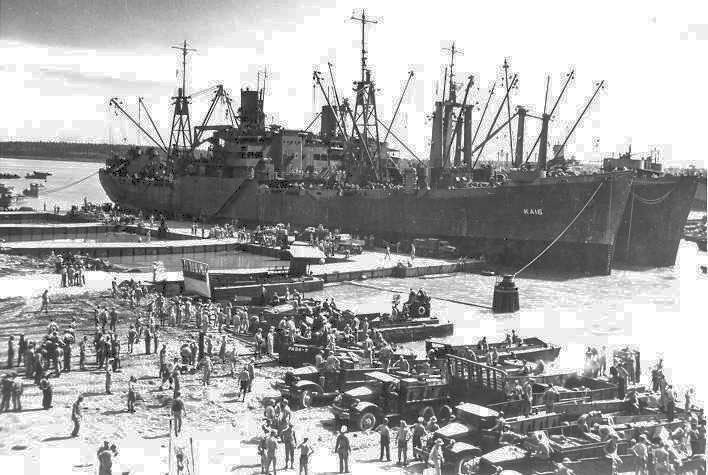
Figure 3

Figure 4
Figure 4 shows the interior of the craft and the extent of restoration required. Cleaning up the hull, removal of non authentic material, replacing damaged wood and a paint job are among the activities required for restoration.

Figure 5
An attempt to determine the age of the boat was not fruitful since the hull number could not be found. Other clues are needed. Inspection of the boat reveals that the rear machine gun pits have been covered over with fiberglass. (Figure 5) Figure 6 shows the bow ramp winch which was internal to the boat.
Figure 7 is a label on the starter showing a date of manufacture of 4-28-45. The starter appeared to be the original starter. Figure 8 is a drawing of the 1952 pattern. The winch was external to the hull and there were no machine gun pits on the 1952 pattern, suggesting that this boat is indeed a WWII boat, probably produced near the end of the war. The manufacturer of the boat could not be determined because of the lack of a hull number.
Higgins, Owens Yachts, Chris-Craft and others made LCVP's during the war.

Figure 6

Figure 7
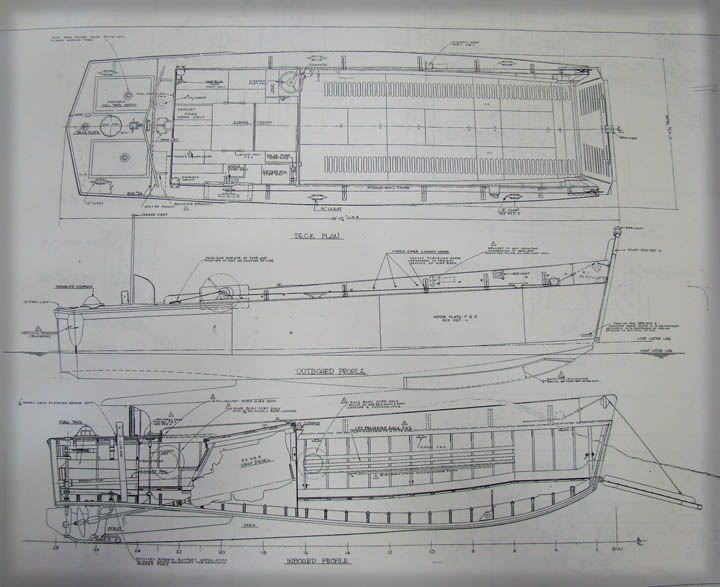
Figure 8A Drawing of post WWII boat. The ramp winch is to the sea side of the coaming boards and no gun pits near the stern. (Courtesy First Division Museum)
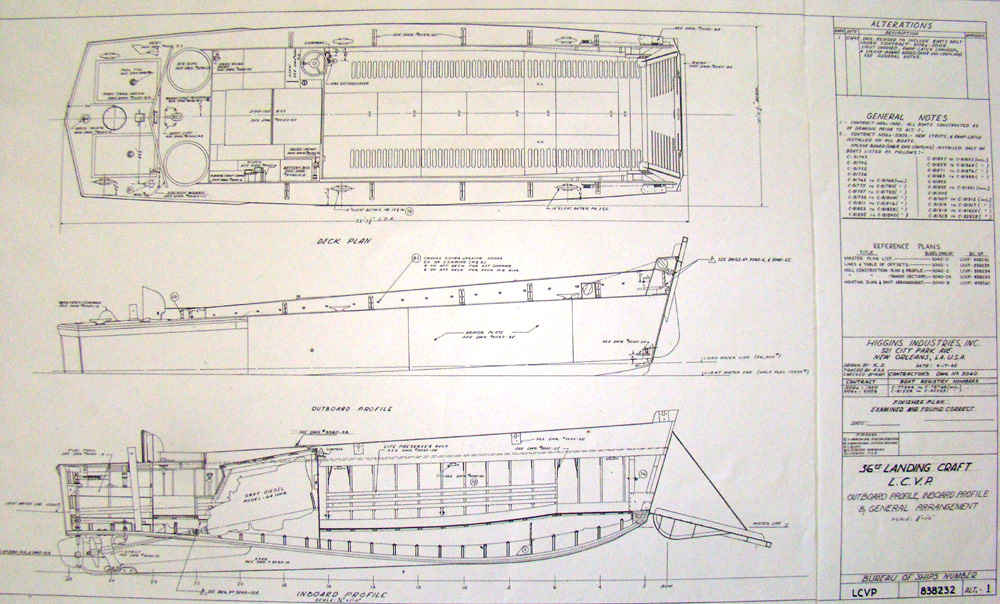
Figure 8B Drawing of a WWII boat. The ramp winch is inside the hull and two gun pits are provided near the stern. (Courtesy National WWII Museum)
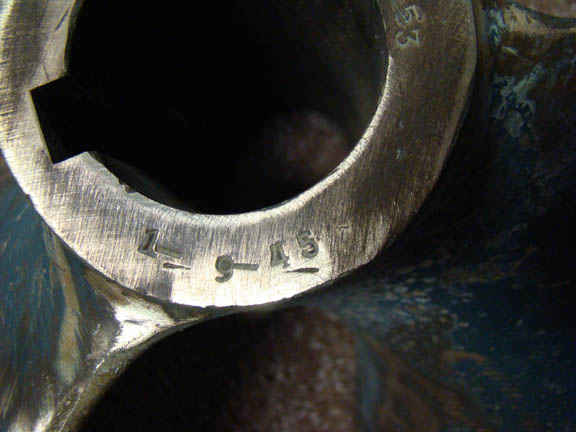
Figure 9 The propeller was removed and the date 1/9/45 appeared on the hub.

Figure 11
New paint for the starboard side.

Figure 12
New coaming boards installed on hull. During WWII, these were used to reduce the amount of water entering the hull during heavy weather.

Figure 13
Repair of deck on starboard side with fiberglass cloth and resin.

Figure 14
Machine guns on temporary mounts near stern. Gun pits will have to be cut out through the deck (see Figure 5).

Figure 15
Holes to be filled in rub rail on the port side.

Figure 16
Sealing strip added to coaming board on starboard side. New cover completed.

Figure 17
Original M40 cradle and 1917 wood ammunition box. This cradle was used on LVCP's with a gun shield adapter added.

Figure 18
Reproduction .30 cal. machine gun on M40 cradle.

Figure 19
Reproduction Mark-21 US Navy gun mount with reproduction .30 cal. machine gun (front view).

Figure 20
Reproduction Mark-21 US Navy gun mount with reproduction .30 cal. machine gun (rear view).

Figure 21
Port side view of new tarp.

Figure 22
View of new port side paint job.

Figure 23 LVCP gun mount.
Would appreciate any detailed information on this gun mount
email Roberts Armory

Figure 24 Cutting hole in deck to match covered over gun pits.

Figure 25 Making gun pit upper ring.

Figure 26 Installing gun pit and upper ring.

Figure 27 Final paint job.

Figure 28 Gun trolley getting fitted to upper ring.

Figure 29 Gun trolley

Figure 30 Gun trolley

Figure 31 Completed gun mount

Figure 32 Completed gun mount

Figure 33 Stern numbers added

Figure 34 Starboard side numbers added

Figure 35 Cargo compartment floor boards added plus paint
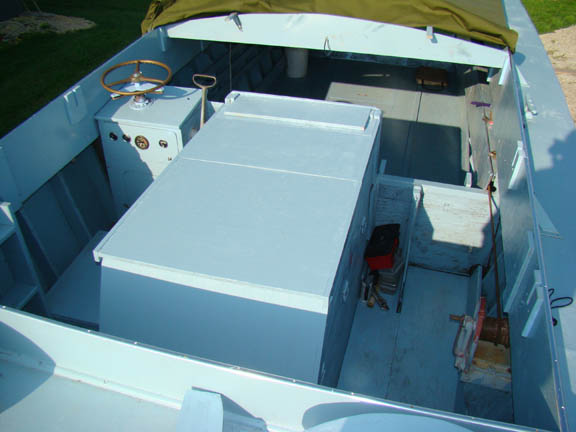
Figure 36 Crew compartment nearly finished

Figure 37 Cargo compartment nearly finished

Figure 38A Gun position completed
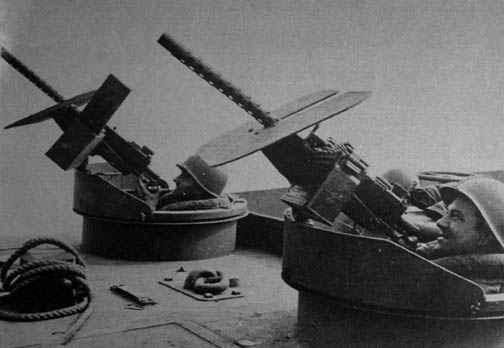
Figure 38B WWII photo of gun position

Figure 39 Cargo compartment completed

Figure 40 Stern view

Figure 41 Starboard side view

Figure 42 Foam in bilge was installed after WWII by the Navy to add more flotation.

Figure 43 Foam removed and bottom paint applied.

Figure 44 Hull registration number is C32238 as shown on the keel. According to researcher Alexander Raigo, this LCVP (registration C32238) was built by Higgins Industries according to a contract for 3600 boats in February-April 1943. This boat was then sent to Camp Pendleton and used in landing craft training for the Marines. It originally had the rounded stern that was modified later to the V stern.
After the War it was likely declared surplus and given to the City of Los Angeles as a utility boat performing various duties at the Los Angeles city reservoirs.

Figure 45 The reason for foam removal was to reduce the chance of water accumulation between the foam and wood which could cause rot.

Figure 46 Higgins Boat lifted from cradle.
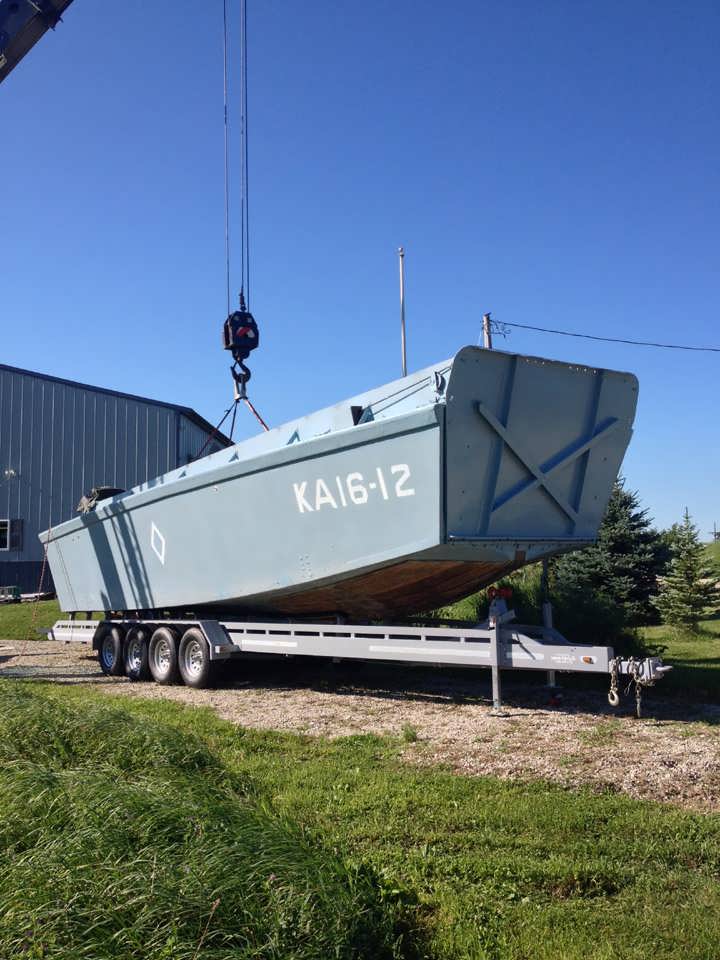
Figure 47 Higgins Boat settling on trailer.
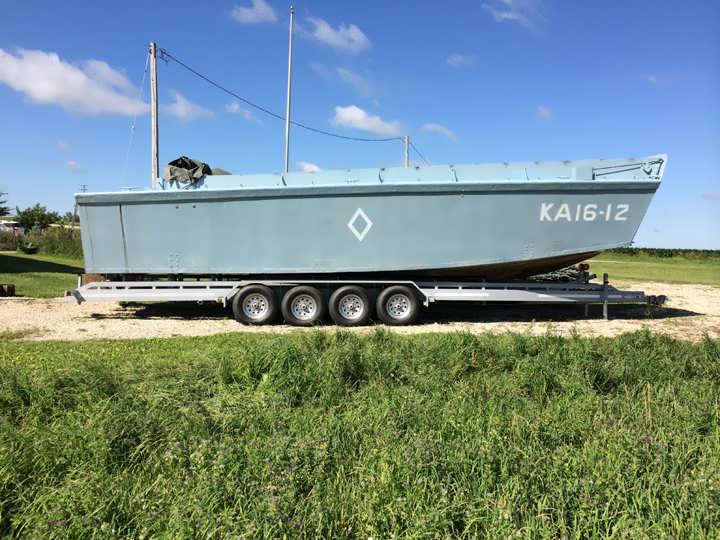
Figure 48 Higgins Boat on trailer.
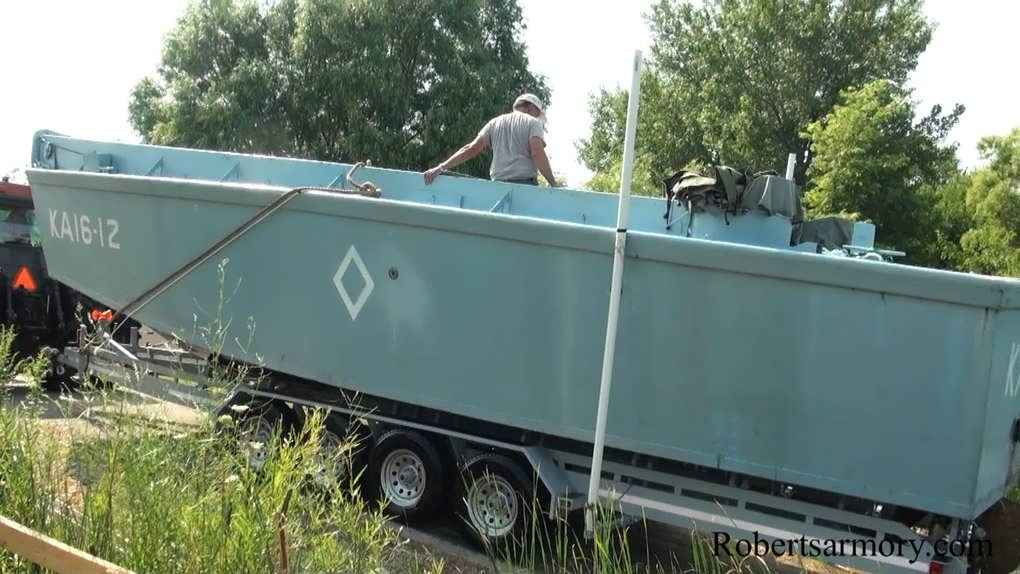
Figure 49 Higgins Boat launch.
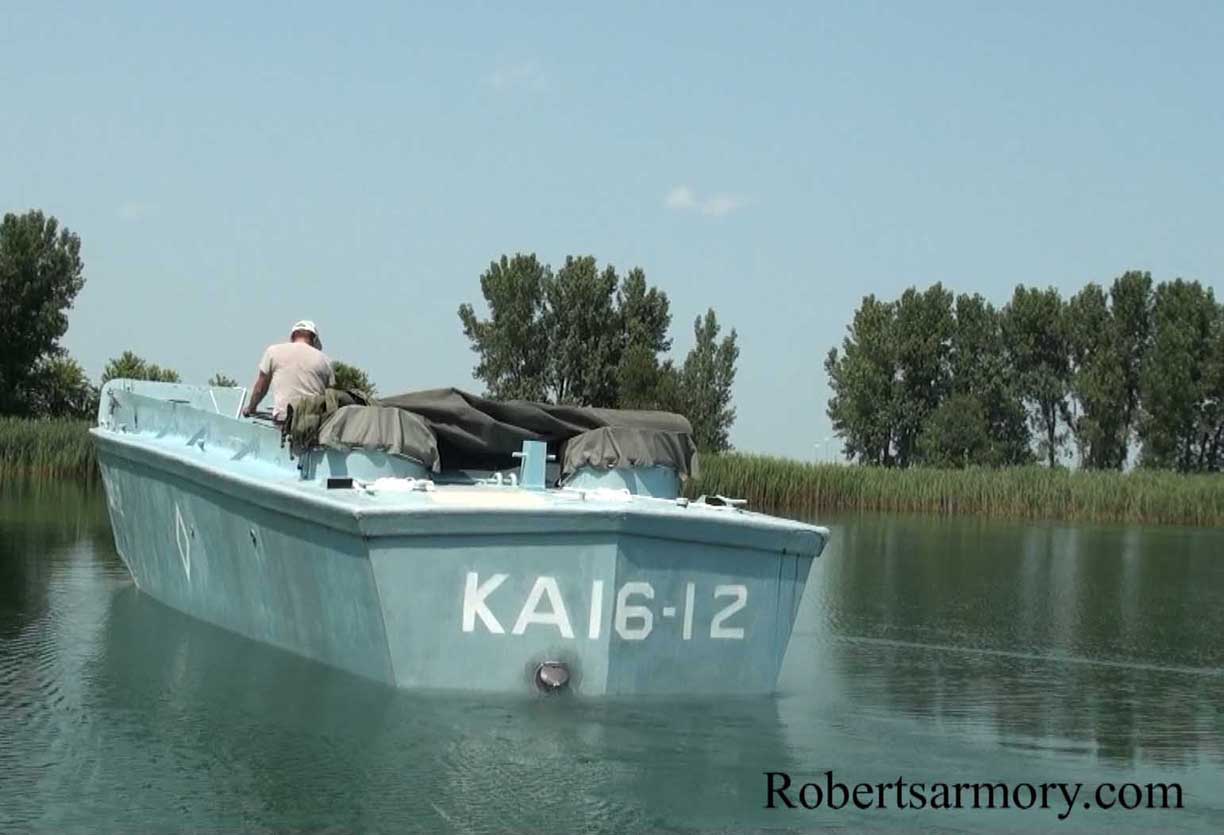
Figure 50 Higgins Boat slow idle.
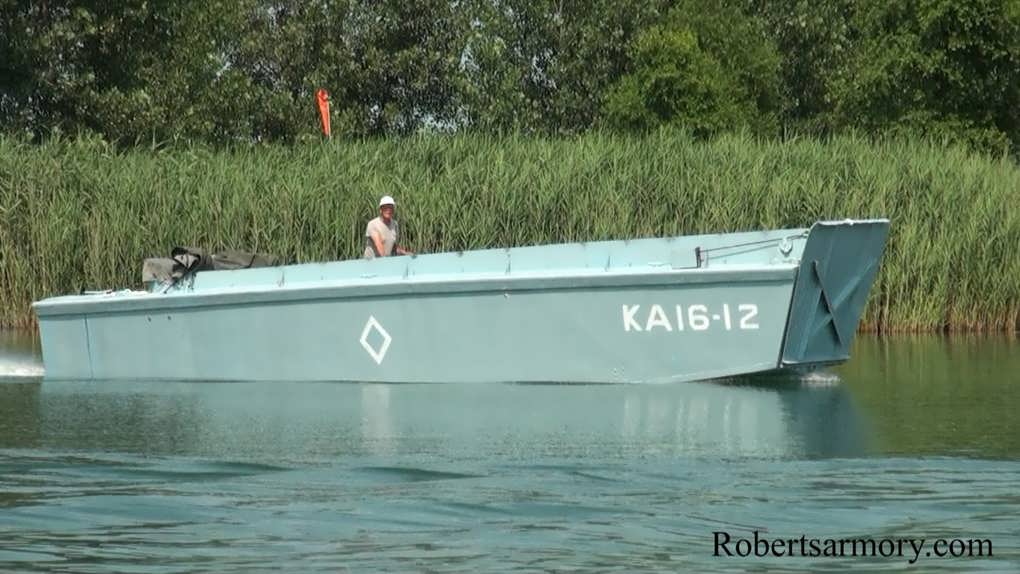
Figure 51 Higgins Boat medium power.
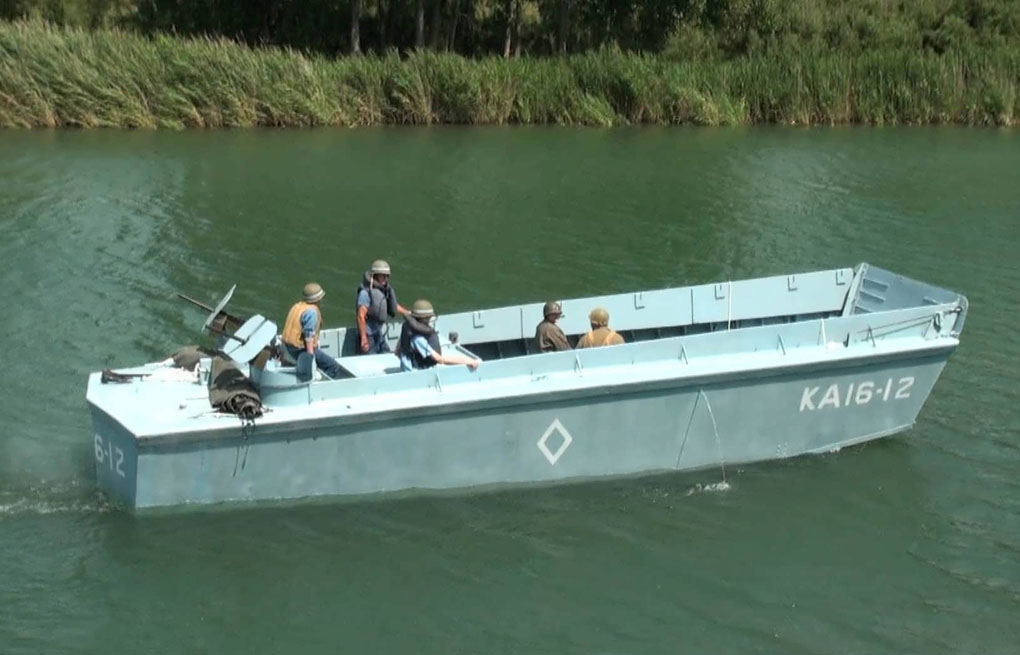
Figure 52 Cruising at 3 knots.
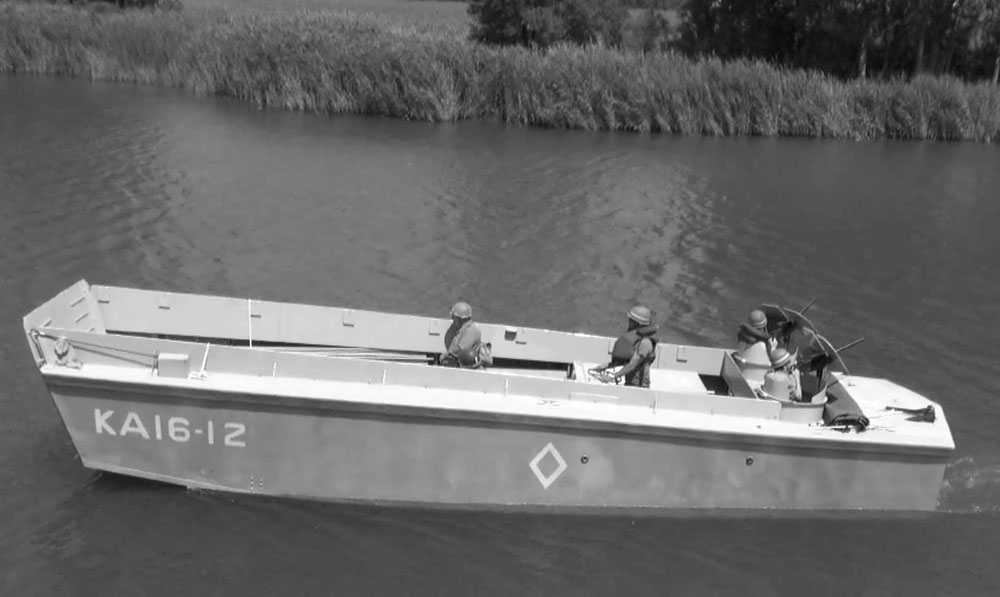
Figure 53 Cruising at 3 knots WWII reenacted.
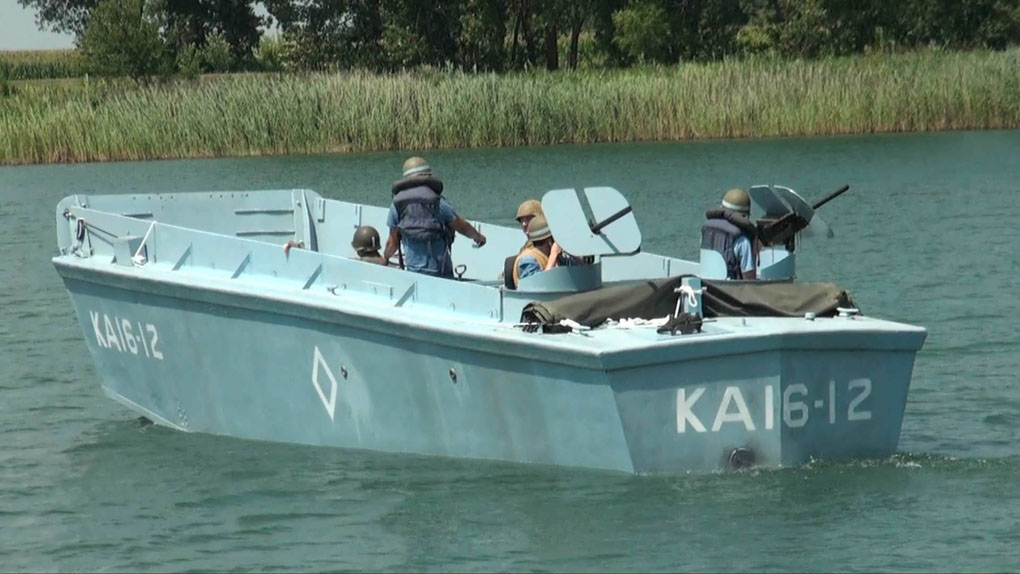
Figure 54 Stern gunners.
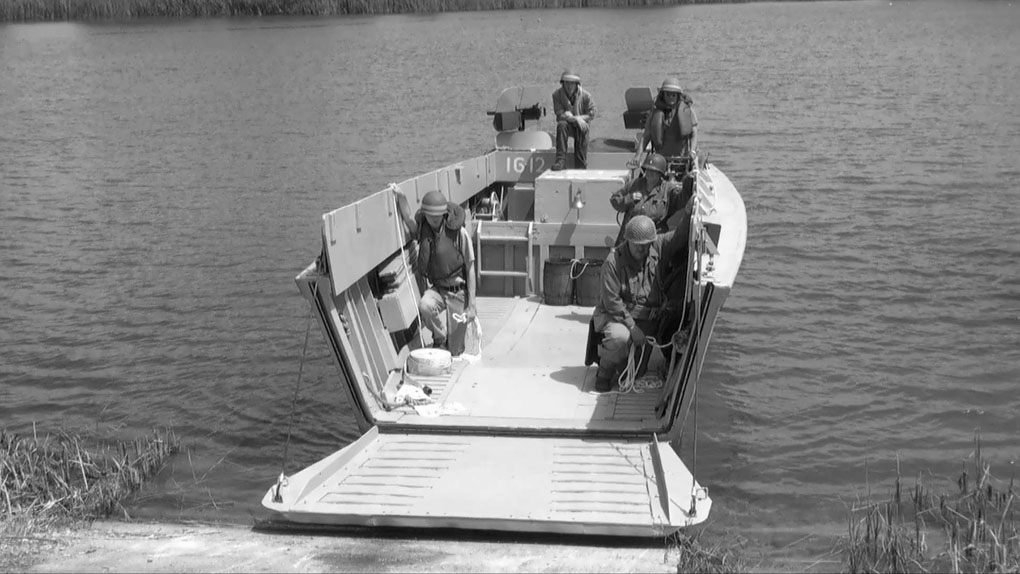
Figure 55 Landing.
More photos will become available as restoration continues.
Technical Data
Weight: 17500 lb
Length: 36' 3"
Width: 10' 10"
Draft: 3'
Max speed: 12 Knots
Guns: Two 0.30 Cal. Machine Guns
Capacity: 8100 lbs
Engine: Gray Marine 64-NH9 Diesel, 225 HP


























































 BACK TO ROBERTS ARMORY HOME PAGE
BACK TO ROBERTS ARMORY HOME PAGE